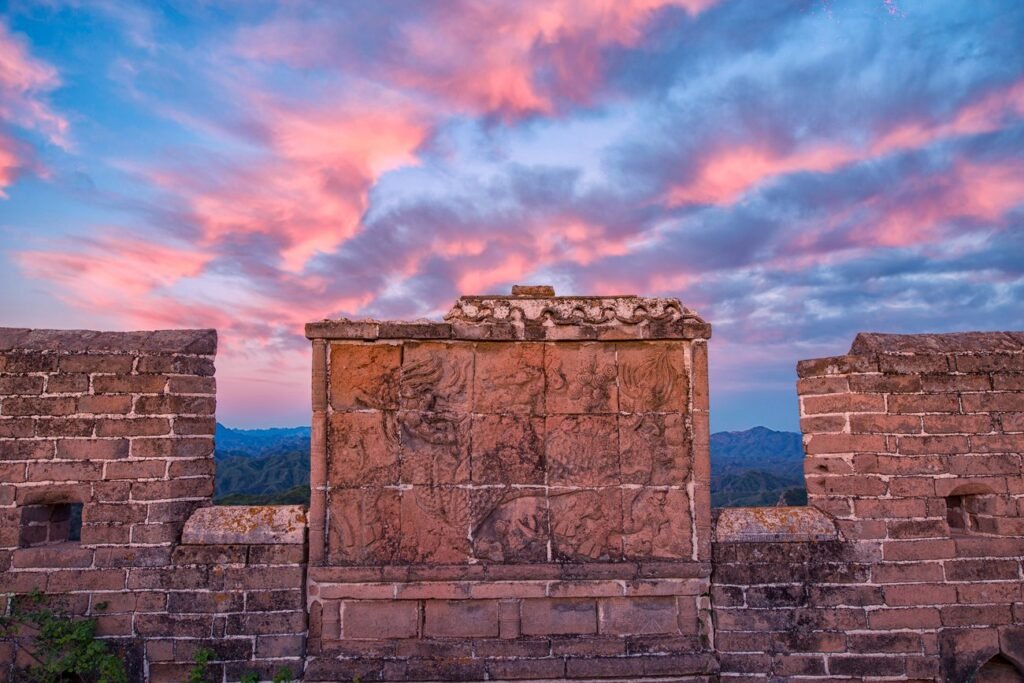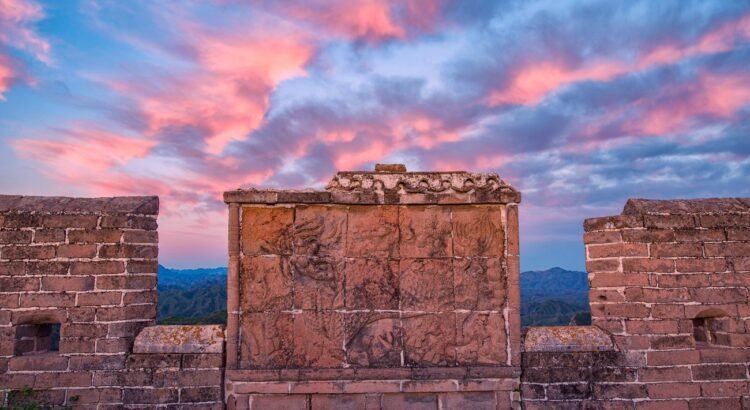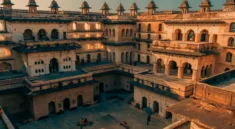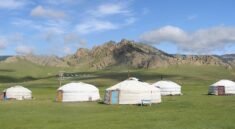
Travel has the power to transport not only the body but also the soul. Some journeys whisper softly through cobblestone streets and ancient alleys; others roar across mountains and rivers. But a few — rare and extraordinary — carry you into the marrow of history itself. Standing at the starting point of the Great Wall and wandering through the remnants of China’s first capital is one such journey.
This isn’t merely about visiting historical sites or ticking off landmarks. This is about rediscovering the roots of a civilization, one step at a time — where each stone has a story, each brick a memory, and each whispering breeze speaks of emperors, warriors, poets, and dreamers.
Welcome to Xi’an, the cradle of Chinese civilization and home to Lintong, where the ancient whispers of Chang’an — China’s first imperial capital — merge with the rugged strength of the Great Wall’s early foundations. This journey isn’t just about looking back; it’s about walking forward through history, grounded in the soul of a timeless nation.
The Gateway to Ancient China: Xi’an and Its Legendary Legacy
Before Beijing became the face of modern China, before Shanghai turned into a shimmering skyline of ambition, there was Xi’an, once known as Chang’an — the Eternal Peace. As the capital for more than a dozen dynasties, including the mighty Qin and Tang, Xi’an was the political, cultural, and economic heart of the empire.
Xi’an was also the eastern terminus of the Silk Road, making it a melting pot of cultures, religions, ideas, and innovations. Walk through its old streets, and you don’t just see Chinese history — you see world history, unfolding through stone, sand, and time.
And just outside this storied city lies a site of even deeper significance: Lintong District, home to both the Terracotta Army and the symbolic starting point of the Great Wall. Here, the journey begins — literally and spiritually.
The Great Wall: Not Just a Wall, But a World
When we think of the Great Wall, we often picture its majestic stretches near Beijing — winding through misty mountains. But the origins of this colossal feat of human engineering lie far to the west, near Xi’an.
The Great Wall began as separate fortifications, built by various warring states. It was Qin Shi Huang, the first Emperor of unified China, who linked them together in the 3rd century BCE. He was also the same visionary ruler who established his capital near modern-day Xi’an — and ordered the creation of the Terracotta Warriors to guard him in the afterlife.
In the Lintong area, you can walk along ancient fragments and reconstructed sections of the first wall — a very different experience from the tourist-packed sections near Beijing. These early walls were often made of rammed earth, and though less visually dramatic than their Ming-era counterparts, they are more historically profound.
To tread here is to touch the beginning — the very first stones of a colossal ambition to protect an empire. The scale may be smaller, but the weight of history is immense.
Rediscovering the Past Through Every Step
Walking the Great Wall at its starting point is not about grand views — it’s about intimate understanding. The weathered earth underfoot, the quiet rustle of dry grass, the subtle undulations of a wall shaped by centuries — all pull you inward.
With each step, you imagine the laborers who built it, often under extreme duress. You feel the vigilance of the soldiers who once patrolled these battlements, scanning the horizon for threats from the north. You begin to understand that the Wall was not only a defensive structure — it was a symbol of unity, ambition, and fear.
Unlike the reconstructed sections elsewhere, here the ruins feel honest. They are not polished for photos — they are raw, aged, and vulnerable, like ancient scrolls exposed to the wind. And in that vulnerability, you find beauty.
From Wall to Wonder: The Terracotta Warriors
Just a few kilometers away lies one of the most staggering archaeological discoveries in human history: the Terracotta Army. Discovered in 1974 by local farmers, this subterranean army consists of over 8,000 life-sized soldiers, horses, and chariots — each unique, each crafted with an attention to detail that defies belief.
Commissioned by Qin Shi Huang, these silent sentinels were buried with him to guard his spirit in the afterlife. But they also stand guard over a legacy — a testimony to an emperor who dreamed on a scale no one had before.
Visiting the three excavation pits is like entering a frozen moment in time. Rows upon rows of warriors stand in formation, their expressions lifelike, their armor intricate. Some still bear traces of paint, hinting at the vibrancy they once had. Archaeologists believe many more remain buried — an entire world waiting to be unearthed.
Chang’an: China’s First Capital, Eternal in Spirit
The ruins of ancient Chang’an remind us that cities, like empires, rise and fall — but their spirit endures. Once larger than Rome and arguably more cosmopolitan, Chang’an was a beacon of urban planning, art, poetry, and political innovation. It set the blueprint for countless Chinese cities that followed.
Today, Xi’an still bears the rectangular shape and structure of that ancient capital. The old city walls — among the best preserved in China — encircle a bustling modern city. Walking along the top of these walls offers a panoramic view of past meeting present, where neon lights coexist with drum towers, and dumpling shops thrive beside centuries-old gates.
In every alley, you can feel the heartbeat of history. From the Big Wild Goose Pagoda, a symbol of Tang-era Buddhist enlightenment, to the Muslim Quarter, where the Silk Road’s cultural exchanges still echo in the aromas of cumin and chili oil — Xi’an is a living museum.
Cultural Immersion: Where History Breathes
To fully rediscover China’s first capital, you must do more than visit its sites — you must immerse yourself in its rhythm. Try the local delicacies: biangbiang noodles, thick and hand-pulled, topped with spicy meat and vegetables. Watch the making of shadow puppets — an ancient art form where light and leather tell timeless tales.
Take part in a traditional calligraphy session or sip local tea while listening to Qinqiang opera, a haunting, high-pitched style native to Shaanxi Province. Every sensory experience becomes a thread connecting you to the past.
Standing at the Crossroads of Time
There’s a moment, perhaps at dusk, when the golden light touches the old city wall, and the wind carries the scent of incense from a nearby temple. In that moment, the centuries dissolve. You’re no longer a tourist. You are a pilgrim, standing at the crossroads of ancient and now.
You remember the warriors at the Wall, the artisans of the Terracotta Army, the poets of the Tang Dynasty, the monks who walked west in search of sacred texts. You understand that you are not just seeing history — you are becoming part of it.
A Journey That Changes You
Walking the Great Wall’s starting point and rediscovering China’s first capital is not a typical vacation. It’s not designed for instant gratification. It demands your time, your attention, and your heart. But in return, it offers something priceless: a deep connection to one of humanity’s oldest and richest cultures.
You return not just with photos, but with perspective. You begin to see walls not as divisions, but as expressions of will. Cities not as places, but as stories. And history not as distant, but as something alive within you.
Final Thoughts: Walk, Remember, Rediscover
To walk the Great Wall where it all began is to walk in the footsteps of ambition and endurance. To rediscover China’s first capital is to open a scroll of wisdom, poetry, and vision that still guides the East today.
It’s more than a destination. It’s a revelation.
So go. Walk those ancient paths. Touch the stones that launched an empire. Let the wind of Xi’an carry your thoughts back through time. And when you return, carry a piece of that eternal spirit with you — a quiet strength, an enduring awe, and the deep knowing that history is not something we study — it’s something we live.




